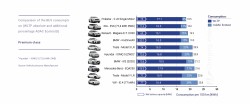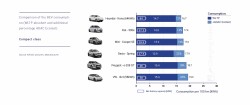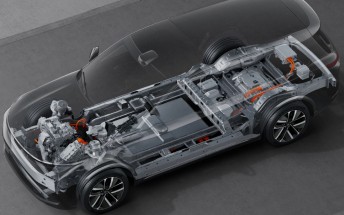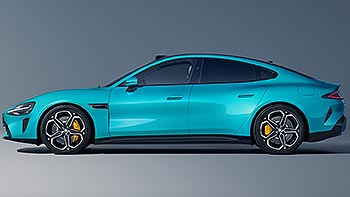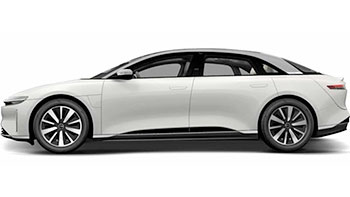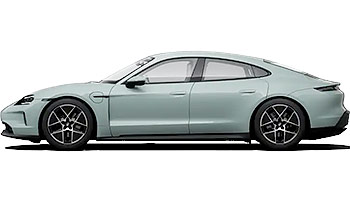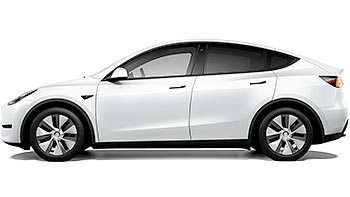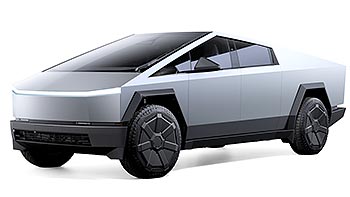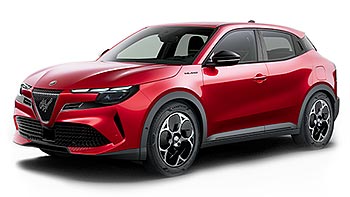Kia EV6 crowned the best charging EV in the latest P3 Charge Index
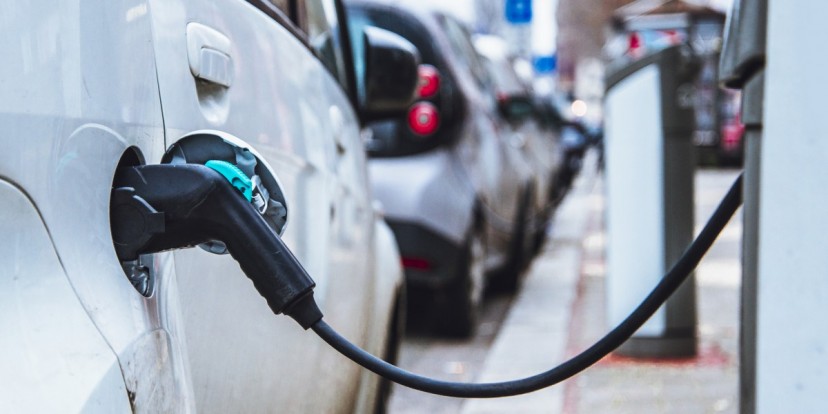
P3 Group offers engineering and software development services for automotive and energy sectors. The company also created the P3 Charging Index - an independent comparison tool that can show real charging speed of different electric vehicles.
The P3 Charge Index was first established in 2019 and this year we see its third edition. The CI is trying to make more sense out of charging speeds, since peak kW is not the most relevant metric as we explained recently. Instead of using kW the CI uses a combination of energy consumption and charging curves of the electric vehicles mapped over the charging time. The resulting index aims to provide a more accurate indication of real charging speed. Index of 1.0 means the car can recharge 300 km in 20 minutes.
For the first time the vehicles taking part in the test were divided into three groups based on their net list price: luxury class for vehicles over €65,000 then premium class for vehicles from €35,000 to €65,000 and finally the compact class with prices below €35,000. Here is the complete list of 21 cars (and their battery capacities) taking part in the test:

All cars were tested using the same fast charger with CCS plug, Tesla cars were the only exception since they had to be tested at the Supercharger station. The initial results clearly show that the maximum charging power quoted by manufacturers as a performance indicator, is not telling the whole story. It can only be achieved in ideal conditions, it needs the battery to be at the correct charge level and the battery has to be preconditioned as well.
Charging window considered for the test was 10 to 80% and below are the tables with results for each class of the cars taking part in this test.
The best performer in the Luxury Class was Porsche Taycan GTS which achieved maximum charging power of 276 kW with 227 kW sustained charging rate. Looking at the charging curve we can see the battery can sustain over 200kW all the way to 55% SoC, this clearly is the advantage of 800V architecture.
 Luxury class charging curves
Luxury class charging curves
Mercedes EQS450+ came second with 210kW peak and 167kW average charging speed and it was closely followed by BMW iX xDrive 50 with 197kW of peak and 152kW average.
The winner in the Premium class was Kia EV6 which thanks to E-GMP 800V architecture managed 235kW peak power and 203kW average in the 10 to 80% SoC window. Tesla Model 3 only achieved an average of 146 kW during charging from 10 to 80% despite quoted maximum power of 250kW. BMW i4 was close behind with a peak of 210kW and average power of 136kW.
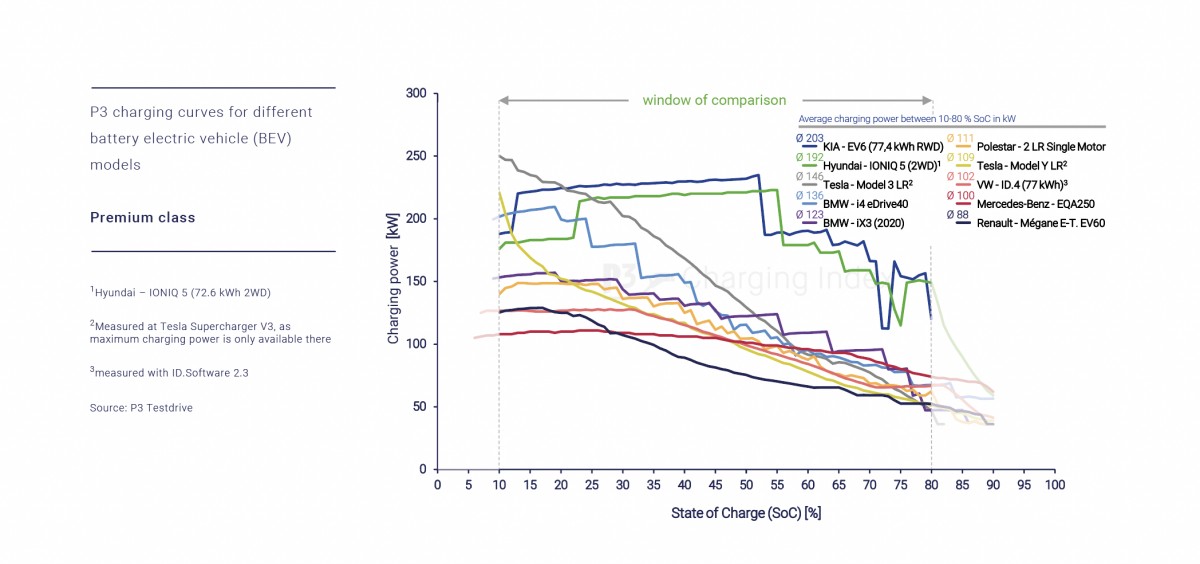 Premium class charging curves
Premium class charging curves
In the Compact class the best performer was the VW ID.3 with peak power of 103kW and average charging power of 81kW.
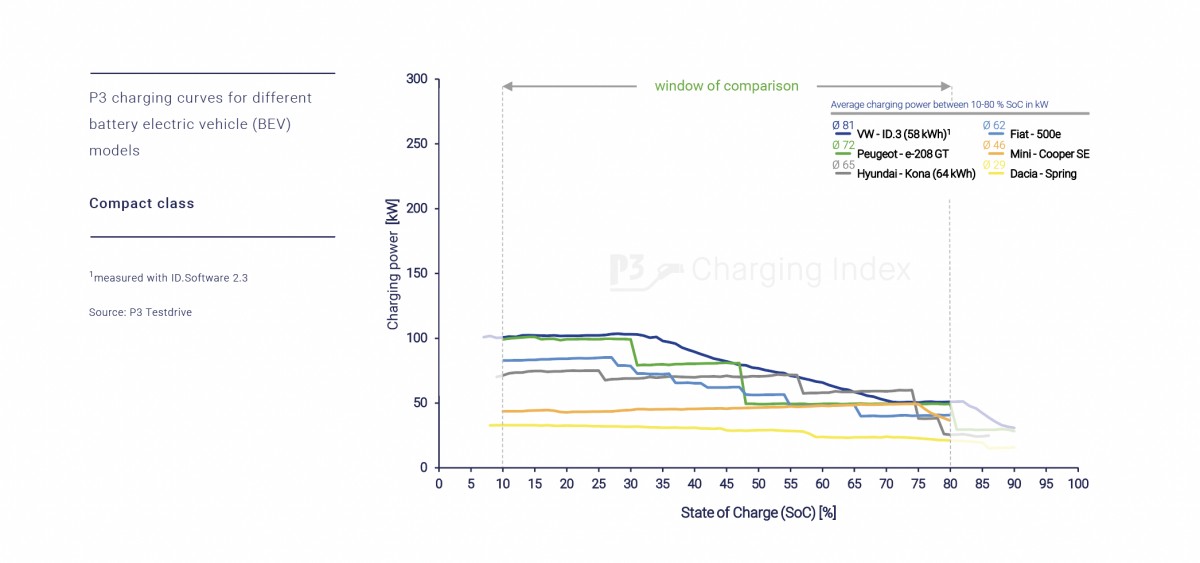 Compact class charging curves
Compact class charging curves
The next stage of the P3CI testing was energy consumption. The cars are put through WLTP cycle and additionally run an ADAC Ecotest. The test was performed until either battery SoC dropped below 50% or the cycle was run 6 times. After the test each vehicle was recharged using Type 2 charging plug (220V 22kW) and required energy was calculated. The consumption results for all three classes are below:
From the two tests we can clearly see that neither the peak charging power nor the energy consumption can tell the full story of long distance driving. The question that everyone asks is how long does it take to reach the destination, charging times included.
In this test the Mercedes EQS450+ wins in the Luxury class with 154km added to the battery in just 10 minutes. The next 10 minutes of charging added an extra 121km with a total of 275 km in 20 minutes. BMW iX came second with 157km in the first 10 minutes and 116km in the following 10 minutes. Porsche achieved 183km and 88km giving it a total of 271km.
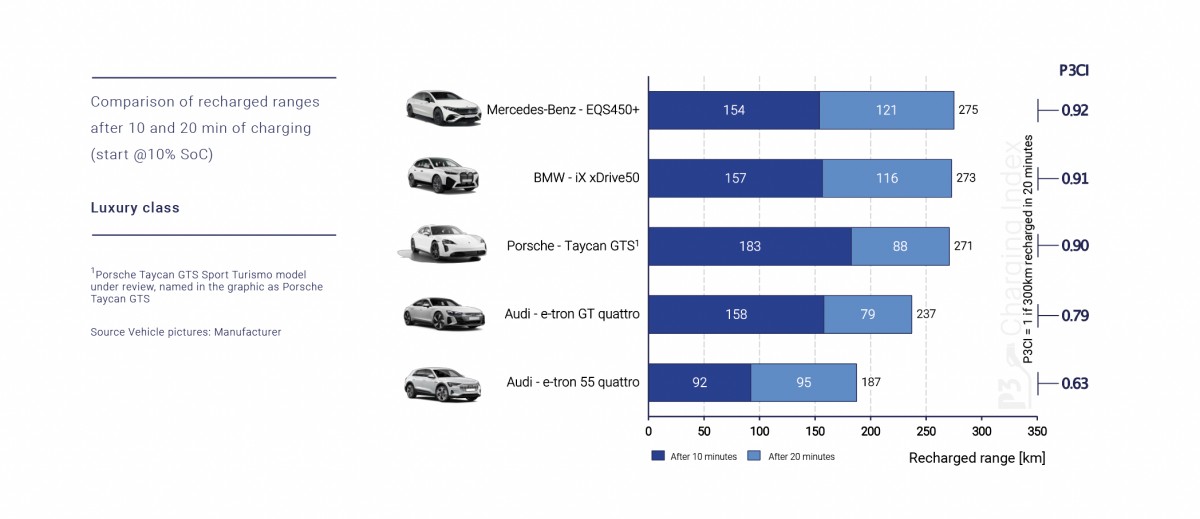 Luxury class recharge range
Luxury class recharge range
The premium class crown went to Kia with a staggering 309km added to the battery in 20 minutes. Interestingly, Hyundai Ioniq 5 which shares the E-GMP platform with the EV6, managed only 272km in the same time. BMW i4 came third with 235kilometers recharged in 20 minutes. The full results are below:
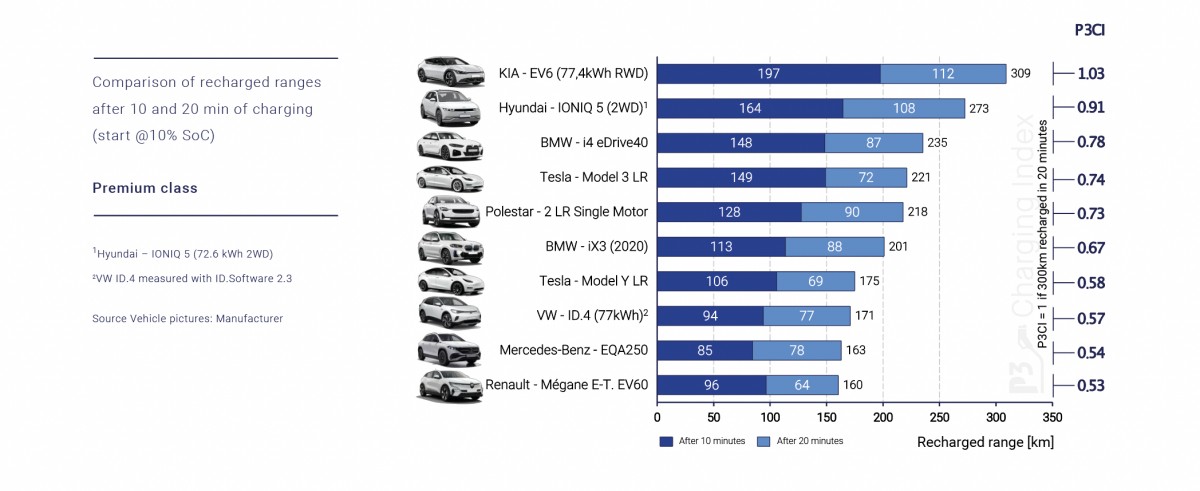 Premium class recharge range
Premium class recharge range
In the compact class the winner is VW ID.3 with 154km charged in 20 minutes followed by Hyundai Kona and Peugeot e-208 GT with 144km and 130km respectively.
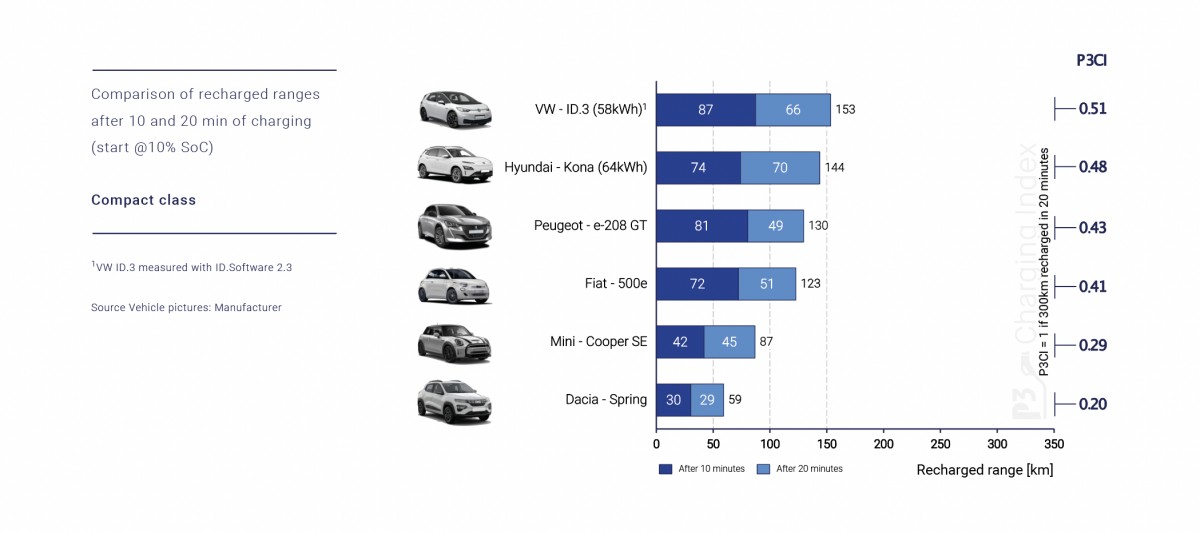 Compact class recharge range
Compact class recharge range
The overall winner of the 2022 P3 Charge Index is Kia EV6 with an index of 1.03, the second place went to Mercedes-Benz EQS450+ with an index of 0.92 and finally the third place was a draw between the BMW iX and Hyundai Ioniq 5 both scoring P3CI of 0.91 - the full results are below:
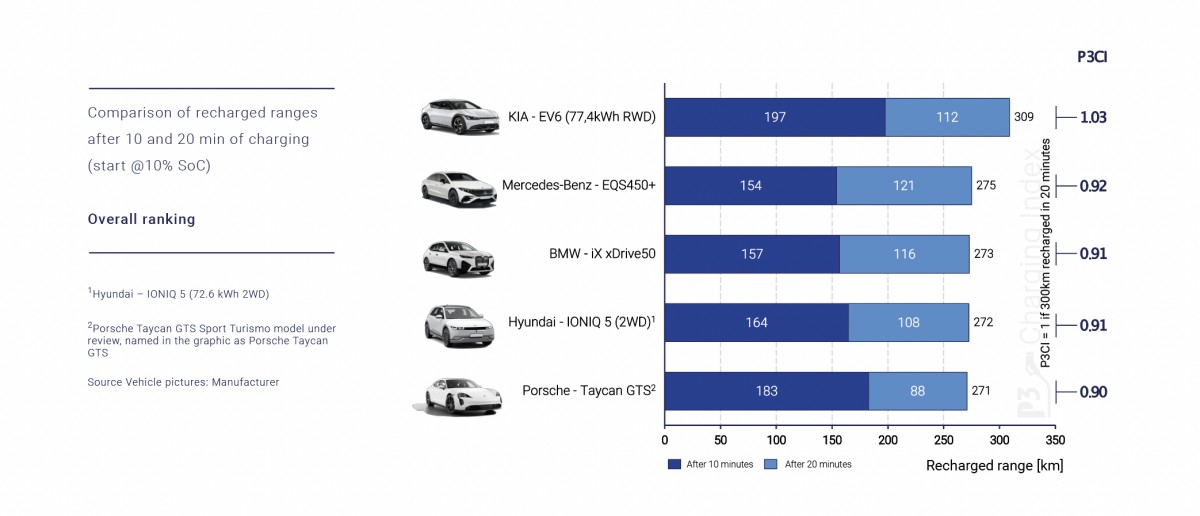 Kia EV6 wins with overall index of 1.03
Kia EV6 wins with overall index of 1.03
The conclusion is that 800V architecture offers a clear advantage when it comes to recharge times, but efficient aerodynamics are just as important. Mercedes and BMW both use 400V architecture and can almost keep up when it comes to long distance journeys.
Related
Reader comments
QBi - simply because of the pricing Megane ended up in a higher group, I don't believe there was any hidden plan in there. Unfortunately the tested version starts at nearly €42.000...
- 23 Jul 2022
- Stf
- Qbi 0
Why they put Ranault Megane to Premium category? I think putting Renault Megane E-Tech to Premium cars was done in purpose so it doesn't win compact class, it is priced similar to VW ID 3 and it performed better then VW. To have a VW as a winner...
- 20 Jul 2022
- Fv1

